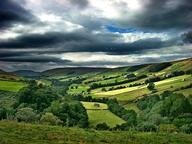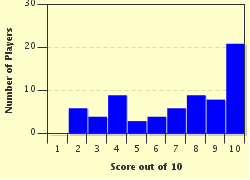Quiz Answer Key and Fun Facts
1. The source of the Calder is found on Heald Moor above the town of Todmorden. Until 1888 part of Todmorden was situated in which other English county?
2. Four miles down the valley from Todmorden lies a town that has been dubbed both the "fourth-quirkiest place on the planet" and the "lesbian capital of Britain". What is the name of this funky town?
3. The husband of American poet Sylvia Plath was born at number 1 Aspinall Street, Mytholmroyd in 1930. In 1984 he was appointed Poet Laureate, a role he held until his death in 1998. Who was this former Calder Valley resident?
4. In the early 1840s the brother of writers Charlotte, Emily and Anne Bronte worked at Luddendenfoot Railway Station as a clerk. What was his name?
5. Canals run parallel to the Calder for most of its length due to problems with navigation. What is the name of the canal that follows the river between Todmorden and Sowerby Bridge?
6. Situated on the outskirts of the town of Brighouse lies the historic Kirklees Estate. According to local legend it is final resting place of which famous outlaw?
7. Four miles down the road from Brighouse lies Mirfield, once said to be the "biggest village in England". Which "Enterprising" Hollywood actor was born here in 1940?
8. Dewsbury a minster town, was during the Industrial Revolution the centre for which type of textile industry that involved the recycling of old cloth?
9. Wakefield, the only city on the Calder, is part of which famous vegetable growing triangle?
10. At the end of its journey the Calder joins the Aire to the north of a town known for its big cat Rugby League team and as the birthplace of the sculptor Henry Moore. Which one?
Source: Author
aliceinw
This quiz was reviewed by FunTrivia editor
spanishliz before going online.
Any errors found in FunTrivia content are routinely corrected through our feedback system.


